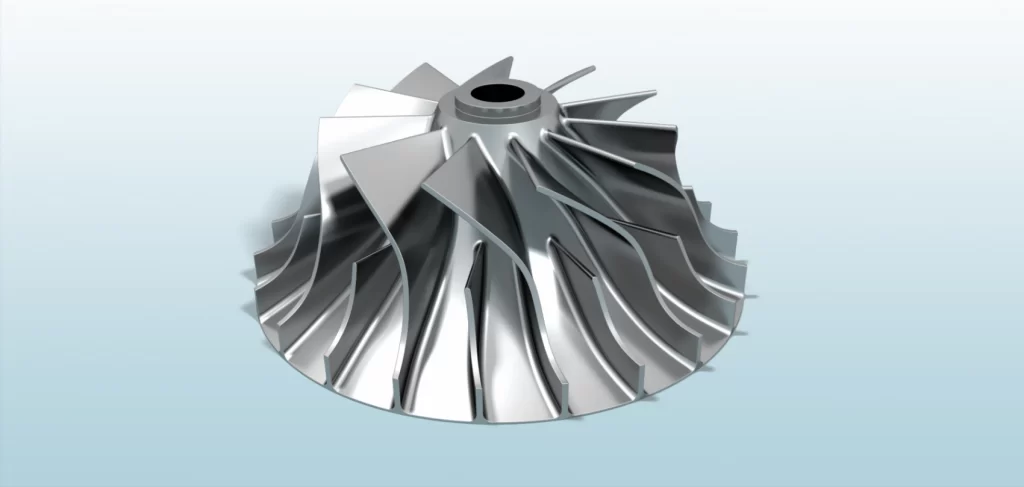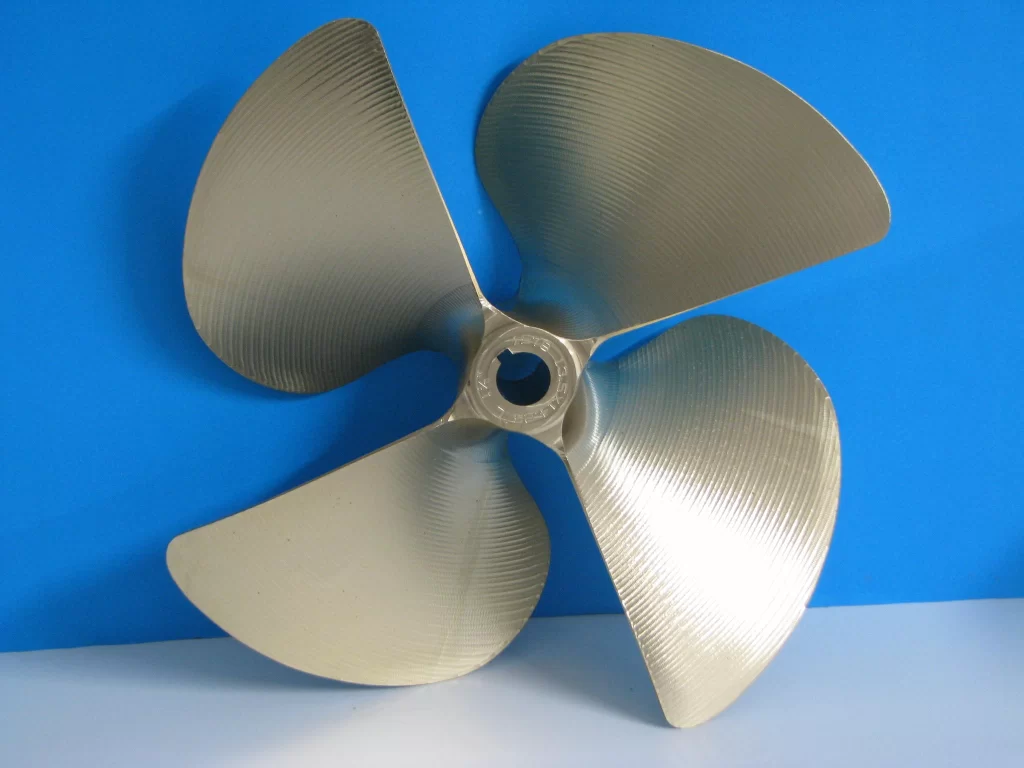Impellers and propellers are both essential rotating components used to move fluids. However, they differ significantly in function, design, and application. Whether used in marine, industrial, or mechanical systems, understanding the difference between an impeller vs propeller is vital for selecting the right component for optimal performance and efficiency.

What is an Impeller?
An impeller is a rotating mechanical device designed to increase the velocity and pressure of a fluid within an enclosed system. It is a key component in pumps, turbines, compressors, and jet engines.
How an Impeller Works
Specifically, an impeller consists of curved blades attached to a central hub. As the hub spins, it draws fluid into the center and forces it outward through centrifugal force. This movement increases the fluid’s kinetic energy and pressure, making it ideal for systems requiring controlled fluid flow and pressurization.
Common Applications of Impellers
Impellers are extensively used in:
- Centrifugal pumps for water supply and wastewater treatment
- Jet engines for compressing air before combustion
- HVAC systems for efficient air circulation
- Chemical processing industries for fluid movement and mixing
Types of Impellers
-
Open Impellers – Best for handling fluids containing solids or debris.
-
Closed Impellers – Highly efficient, ideal for clean liquids.
-
Semi-Open Impellers – A compromise, suitable for moderately impure fluids.

What is a Propeller?
In simple terms, a propeller is a rotating device designed to generate thrust in an open environment by pushing a fluid (air or water) in the opposite direction, enabling the forward motion of a vehicle or vessel.
How a Propeller Works
Fundamentally, operating on Newton’s Third Law of Motion, a propeller consists of multiple angled blades attached to a rotating hub. When the blades spin, they push the fluid backwards, creating a forward force known as thrust. This principle is essential in the movement of ships, boats, aircraft, submarines, and drones.
Common Applications of Propellers
-
Marine vessels such as boats, yachts, and submarines
-
Aircraft including airplanes, helicopters, and drones
-
Wind turbines and ventilation systems
Types of Propellers
- Fixed-Pitch Propellers – Simple, fixed-angle blades, commonly used in boats.
- Variable-Pitch Propellers – Adjustable blades for changing performance conditions.
- Contra-Rotating Propellers – Two propellers rotating in opposite directions for higher thrust and better efficiency.
Key Differences Between Impellers and Propellers
Function:
- Impellers increase the pressure and velocity of fluids within a closed system.
- Propellers generate thrust by moving fluids in an open system.
Application:
- Impellers are used in pumps, compressors, and turbines.
- Propellers are used in boats, ships, aircraft, and drones.
Design:
- Impellers have curved blades enclosed within a casing.
- Propellers have exposed blades that operate in an open environment.
Fluid Handling:
- Impellers work with both liquids and gases within controlled systems.
- Propellers operate mainly in open water or air environments.
Impeller vs Propeller: Which One to Use?
The choice between an impeller and a propeller depends on your application needs:
For instance, choose an impeller when you need to increase pressure or control fluid flow inside a pump or closed system.
On the other hand, choose a propeller when you need to move a vehicle or vessel by generating thrust in open air or water.
Ultimately, understanding their fundamental differences ensures the right selection for applications in industries such as marine engineering, aerospace, water treatment, and energy production.
Conclusion
While impellers and propellers both use rotational motion to move fluids, their operational principles, designs, and applications are fundamentally different. Specifically, Impellers work efficiently in closed systems to manage fluid flow and pressure, while propellers function in open environments to generate thrust and motion.
Therefore, by clearly understanding these differences, engineers, manufacturers, and technicians can make informed decisions to enhance performance, safety, and energy efficiency in a wide range of mechanical and industrial systems.